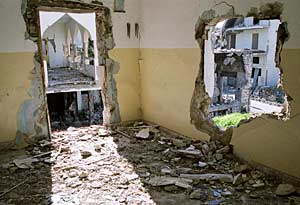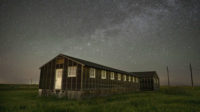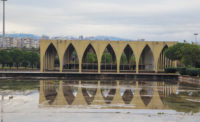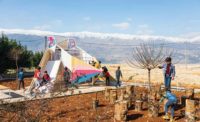Bint Jbail is a small town in southern Lebanon. Labeled a Hezbollah stronghold, it was especially hard hit by Israeli air strikes during last summer’s war—more than 2,500 houses were damaged and 800 completely destroyed. But when Howayda Al-Harithy, an associate professor of architecture at the American University of Beirut and a member of its postwar reconstruction unit, arrived shortly after the August 14 cease-fire, she found reason for hope.


Photo: © Jessica Dheere
As a preservation expert, Al-Harithy saw that much of Bint Jbail’s historic fabric had survived. On returning to Beirut, she asked her third- and fourth-year students to envision ways of rebuilding and reinterpreting it. The effort sparked a larger conversation about the town’s future—and might spare historic neighborhoods from further destruction.
Al-Harithy is convinced that simply razing damaged houses and replacing them with new construction and 33-foot-wide boulevards, as the city’s mayor, Ali Bazzi, originally proposed, would victimize residents again through “the erasure of memory, history and identity.” And so shortly after the war she urged city and Hezbollah officials to slow—and, inside the old city, halt—the removal of rubble, some of which can be used to build again. Al-Harithy also broached the subject of preservation with representatives of the Qatar Rehabilitation Program of South Lebanon. Qatar has pledged $300 million toward Lebanese rebuilding projects, including the reconstruction of four entire towns, among them Bint Jbail.
Local architect Haitham Bazzi was impressed by Al-Harithy’s commitment. In support of her efforts, he circulated petitions urging that Qatari payments be deferred to fund the creation of a master plan for preservation and adaptive reuse. Bazzi says that of the 148 houses that Al-Harithy would like to include in this project, 102 owners have agreed to hold off on rebuilding.
Negotiations between local officials and the Qataris are underway now and Bazzi hopes that they will conclude this spring. In the meantime, Al-Harithy’s students are conducting site analysis and interviews with residents of the damaged areas—work that the American University in Beirut is incorporating into a draft master plan.
The students are also imagining an urban future for Bint Jbail that won’t turn its back on a historic past. During recent crits, one young architect named Céline Stephan spoke of “stitching the city back together” with a new library and a re-situated marketplace to accommodate the Thursday souk that has taken place since the Ottoman era. Other students paid close attention to preserving the footprints of centuries-old stone houses while also providing for new, Western-style apartments.






Post a comment to this article
Report Abusive Comment